Presidents of Florida Southern College
1883 - Present
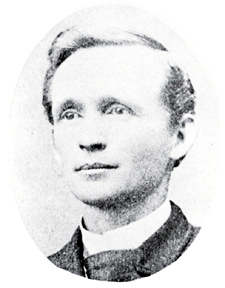
Rev. Claude A. Saunders
1883-1886
Rev. Claude Augustus Saunders was born in Manatee County, Florida on May 31, 1853. He attended Emory College and graduated in 1876 as class valedictorian. He joined the Florida Conference in 1877 and later became an elder in the Conference in 1882, serving appointments that included Presiding Elder of the Gainesville District until his retirement in 1924.
Rev. Saunders later became the Principal of the South Florida Institute, later known as the Wesleyan Institute, established in 1883 by the Jacksonville District of the Florida Methodist Episcopal Church, South in Orlando. At the end of his term as Principal, he was named Trustee and asked to draft a curriculum for the newly proposed college division. He was instrumental in persuading the Florida Conference to assume ownership of the College and move it to Leesburg in 1886. Rev. Saunders would continue to serve as Trustee until 1906. He passed away on January 21, 1943 at the age of 89.
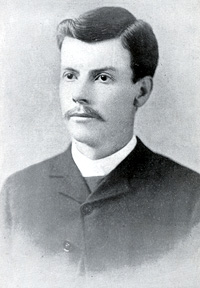
Joshua Hollingsworth
1886-1888
Joshua Hollingsworth was born in Polk County at Galloway near the present city of Lakeland on June 13, 1858. Lake Hollingsworth, near the present-day location of the College, got its name from John Henry Hollingsworth, a pioneer resident of the city and uncle of Joshua Hollingsworth. Following schooling in Florida, Hollingsworth began work at Emory College in Oxford, Georgia, September 28, 1880, ending his first year at the head of his class. He was said to have been an excellent "declaimer," or debater. After several teaching assignments to help with college costs, he graduated in 1885. He completed a one-year teaching contract in Bolton, Missouri, before being named President of Florida Conference College and High School in Leesburg.
Joshua Hollingsworth became the first President, following the beginning of the college program, on June 1,1886. Some of his duties as president included the responsibility for boarding students as well as the financial obligations of the school. The first commencement President Hollingsworth took place in was one June 2,1887. The ceremony was planned by the Board of Trustees and included a day of activities on the Sunday preceding commencement. Unfortunately, at the end of two years, poor health brought Hollingsworth's return to Oxford, Georgia and an early death at age 31 on August 11, 1889.
Rev. William Wirt Seals
1888-1889
Rev. William Wirt Seals was born in Georgia in July 1858 as the son of Rev. Thomas A. Seals and Margaret F. Seals. He attended the Richmond Academy in Augusta, Georgia before later graduating from Emory University in 1879. While there, he was part of the Phi Delta Theta fraternity and served as the organization's poet. He was admitted on trial to the North Georgia Methodist Conference later that year. In 1887, he married Belle Blandin in Alabama. Before joining Florida Conference College as President, he served a professor at the Southwest Georgia Agricultural College and Principal of Lutherville Institute in Georgia.
Rev. Seals only served one year as president of the Conference College from 1888-1889. He was committed to accomplishing something of the original mission of the institution by appealing to those Methodist students who were going out of state for their college preparation. His most significant problem was the lack of funds to increase the academic standing of the school. After he left the College, Rev. Seals held various roles at different colleges including as Professor at Florida Agricultural College and Wesleyan College as well as President of Douglasville College and Piedmont Institute. Rev. William Wirt Seals passed away in Washington, D.C on January 14, 1920.
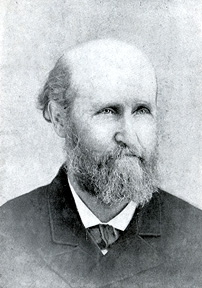
Dr. Theophilus Wilson Moore
1889-1891
Dr. Theophilus Wilson Moore was born in Tirzah, North Carolina on May 3, 1832 and was the great-grandson of Colonel Stephen Moore, who was part of the Continental Army during the American Revolution. In 1852, Dr. Moore graduated from the University of North Carolina, married Mary Ann Smith, and went to California as a missionary all in the same year. At the outbreak of the Civil War, he became a chaplain in the Carolina Regiment. Following the war, he moved to Florida and joined the Methodist Conference, serving, among other appointments, as Presiding Elder of the Jacksonville District. In 1882, he was sent to Monticello as pastor, where he was asked to be a trustee of Emory College, being also honored with the D.D. degree. This encouraged his interest in higher education, and he was among the first to urge the formation of the College in Leesburg. He served on the Florida Conference Board of Education, and as a trustee of the Conference College both before and after his two-year assignment as President. As President, he fulfilled the administrative duties of the role, but he also taught mental and moral science classes.
Beyond serving as President, Dr. Moore was also multi-talented. While in Jacksonville, he developed a 100-acre citrus grove, publishing a book on citrus culture widely used for thirty years. In 1892, he patented a flying machine. He also obtained a patent for a rotary steam engine. While in Sanford, he persuaded the town council to cool Main Street by running water through tiling one foot beneath the surface. Farmers later adopted his method for irrigation purposes. Dr. Moore died on December 30, 1908 at the age of 75.
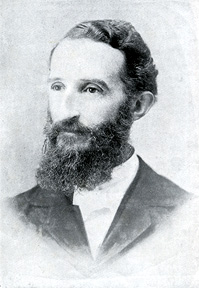
Rev. Henry Edward Partridge
1891-1892
Rev. Henry Edward Partridge was born near Lake Miccosukee, in Jefferson County, Florida on April 5, 1850. As the son of a minister, he received assistance from Florida Methodist ministers and attended Wofford College in Spartanburg, South Carolina. He graduated in June 1871, returning a few years later for his Master of Arts Degree. He was licensed to preach October 6, 1870 and admitted on trial in the Florida Conference at Madison on January 3, 1872, later receiving Elders orders in January 1874. He served many Conference appointments as well as serving as Chairman of the Board of a private school in Ocala.
At the time of his appointment as President of Conference College in 1891, he was pastor of the Methodist Church at Leesburg. In his message to the Conference in Tampa on January 1892, he urged the Florida Methodists to increase support for the College. He advocated for the school as it was an "opportunity for young people to be taught under the proper circumstances especially under the moral influence of carefully selected faculty members." Rev. Partridge later passed away on December 22, 1936 at the age of 86.
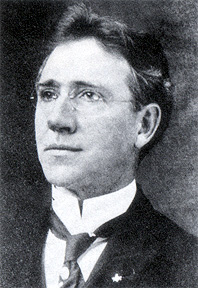
Dr. Wightman Fletcher Melton
1892-1895
Dr. Wightman Fletcher Melton was born at Ripley, Tennessee on September 26, 1867. He was a graduate of Peabody College for Teachers in Nashville and received his B.A. Degree from Blount College in Blountsville, Alabama. In 1894, he received his first Ph. D. degree from the State Normal College in Troy, Alabama, and his second one in 1906 from Johns Hopkins University.
Dr. Melton was elected President of the Conference College at Leesburg at age 24. During his three years as President he expanded the curriculum, hired well-qualified teachers, stressed true scholarship, and encouraged the students to accept application of the intellect as a lifelong habit. After his departure from Leesburg, he served as an administrator in two other colleges and taught English and literature at several others, including Emory University from 1908-1934. He published various literary works, and even served a six-year term as Mayor of Oxford, Georgia. He returned to the Southern Campus for a commencement address in the early Lakeland years. Dr. Melton passed away on November 10, 1944 at the age of 77.
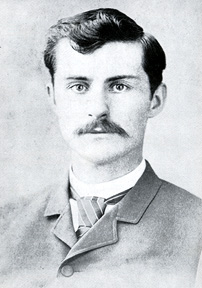
Dr. James Theodore Nolen
1895-1897
Dr. James Theodore Nolen was born in Franklin, North Carolina on April 22, 1863. He graduated with honors and won medals for academic excellence from Emory and Henry College at Emory, Virginia. After two years as a school teacher, he attended Vanderbilt University, completing the Bachelor of Divinity degree in 1891. In 1892, he married Rose Charlotte Thomas of Spring City, Tennessee. Prior to becoming President of the Conference College in Leesburg, he served as principal of a high school and faculty member at another college.
Dr. Nolen was President at Leesburg during difficult years. He reported student enrollment in 1896 at just 85 with 7 faculty members, and the college plant consisted of three buildings. Following President Nolen's death on November 27, 1897, Professor E. F. Herman, teacher of Latin, Greek and German, served as President Pro Tem through December of 1897.
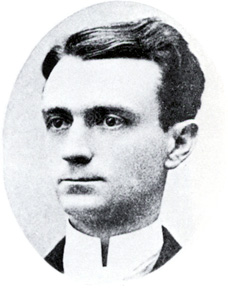
Rev. Thomas Gelzer Lang
1897-1902
Rev. Thomas Gelzer Lang was born in Valdosta, Georgia on March 6, 1959. He attended Emory College and graduated in June 1882 with the Bachelor of Arts Degree, taking first place honors. He married in May 1889 and joined the Conference a few months later. Before serving the Conference as a pastor, he had been principal of the Savannah District High School.
During his Presidency at Leesburg, records show that the Bible department taught a variety of courses such as the Holy Spirit, Doctrine of Angels, Christology, Canon of Scripture, and Messianic Prophecies. Other courses offered included Greek, Latin, Natural Science, History. At the end of the closing term for 1889, President Lang reported that college attendance had been the largest it had ever been. In 1900, Lang oversaw the College's move to Sutherland from Leesburg. Rev. Lang left the College in 1902 and later retired in 1922 to Milledgeville, Georgia, following a noteworthy career as minister and educator. Rev. Lang passed away on October 24, 1937 at the age of 78. In 1970, the Lang Communications Building on the Lakeland campus was posthumously dedicated in his honor.
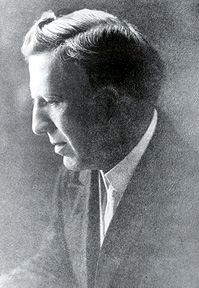
Dr. Shade Wilson Walker
1902-1907
Dr. Shade Wilson Walker was born in Fayetteville, Tennessee on July 18, 1870. He attended the Hopewell Academy, Fayetteville Presbyterian College and the University of Nashville. He did special studies at Harvard University, where he studied with the famous philosopher and psychologist, William James. At the age of 23, Dr. Walker was a practicing attorney in Arcadia, Florida. During a local Methodist revival meeting, he was converted and answered the call to preach. He joined the Florida Conference in 1893, and his first assignment was in St. Augustine. Following a transfer appointment to Santa Ana, California, he became president of a small school in Wrightsville, Georgia. At this time, the Conference College was being moved to Sutherland (now Palm Harbor) and renamed the Florida Seminary School.
As the new President at age 32, Dr. Walker was an energetic young man with "commanding endowments of personality and impressive executive ability." Even the personal tragedy of losing his first wife in a boating accident off the coast at Sutherland in 1902 did not weaken his ability to lead the College. He gathered much broader support, which led to redecoration of the beautiful 159 room hotel as a girl's dormitory and the main building, the construction of a large new brick administration building, effective changes in the curriculum and increases in student body and faculty. The trustees granted him a first ever five-year contract in 1905 and the D.D. Degree in 1906 in recognition of his unique accomplishments. Also in 1905, Dr. Walker married his second wife Grace Parker, a graduate of the College and later member of the Honor Walk. In 1906, Dr. Walker presided over the school's name change to Southern College. By the Spring of 1907, he needed a rest and submitted his resignation. Dr. Walker then accepted appointment to the Board of Trustees and served for many years until his death on March 17, 1958.
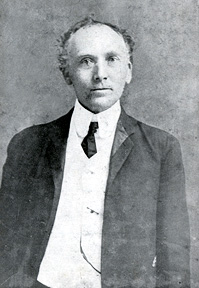
Dr. John Presley Hilburn
1907-1912
Dr. John Presley Hilburn was born in Gainesville, Arkansas on June 26, 1858 as the son of a minister. He attended public school and graduated from Crowley College, entering the ministry himself in December 1880. His first appointment was in Jonesboro, Arkansas. He later transferred to the Florida Conference and served as Presiding Elder for the Tampa, Bartow, Gainesville, Jacksonville, Tallahassee and Orlando districts. Dr. Hilburn was a Trustee of the College for many years, including the time it was at Leesburg. He secured options on buildings and lots when it moved to Sutherland. He was the Conference appointed financial agent, helping raise funds for the College and also served as Chairman of the Board in 1901.
As President of the College, Dr. Hilburn continued with the energetic new program begun by Dr. Walker, which included the construction of the new four-storied brick dormitory for men in 1909 and a large cement block gymnasium in 1910. The value of the College in December 1907 was reported at $185,000 with an endowment of $3,000. There were 215 students, 17 faculty members and 3,500 books in the library. Interest had also begun to build in intercollegiate sports. At President Hilburn's retirement, he was persuaded to continue on as financial agent for the College as well as a Trustee. Dr. Hilburn served the College until his death at the age of 79 on August 7, 1937.
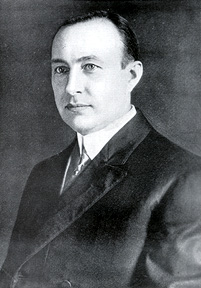
Dr. Walter Leonard Clifton
1912-1914
Dr. Walter Leonard Clifton was born in Mississippi on November 2, 1872. He was a graduate of the University of Mississippi and the University of Nashville before later obtaining his PhD from Columbia University. Before coming to Southern College in Sutherland, he had served as President of both Carrollton College and Grenada College.
Dr. Clifton was said to have remarkable intellectual powers. Similar to most of the presidents who had preceded him, he also taught classes, including subjects in "mental and moral philosophy." His tenure also turned out to be difficult financial years for the College. So much so, that much of the College land had to be sold to cover indebtedness in spite of some liberal donations by the Trustees. Even after Dr. Clifton's departure, the problem continued to require special attention. After leaving Southern College, Dr. Clifton served as the Superintendent for Polk County public schools before later moving to Tennessee where he passed away on July 5, 1932.
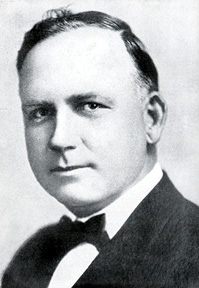
Dr. Rhenus Hoffard Alderman
1914-1925
Dr. Rhenus Hoffard Alderman was born in Lithia, Florida on December 9, 1881 and attended the Florida Conference School at Leesburg. He received his Bachelor of Arts Degree from Emory College and was made principal of Harrilson High School in Georgia for one year. After his graduation Dr. Alderman was then appointed to the faculty of Southern College at Sutherland as science professor, and the second year he was named Vice-President. In 1907, at the age of 26, he took the position of President of Russell College in West Virginia for two years and then was president of Morris Harvey College in West Virginia for five years. He had also done extensive graduate studies at Columbia College and Denver University during these years.
When Dr. Alderman took over as President the debt exceeded $20,000. There were 136 students and 20 faculty members. With good planning, help from the Conference, and effective administration, the debt decreased and student enrollment increased. The World War I years not only brought challenges, but also brought about the development of the first military training program on campus – the Student Army Training Corps directed by the U.S. Army. Soon after, Dr. Alderman faced a disastrous fire in 1921 as well as a second fire and destructive hurricane at the College's temporary location at Clearwater Beach in 1922. These disasters helped convince the trustees to move inland and accept the offer from Lakeland to locate on Lake Hollingsworth. Dr. Alderman successfully presided over both moves and the establishment of the College in the two well-equipped new buildings at the new location. Following his eleven years as President of Southern College, he became President of Logan College in Kentucky. Dr. Alderman passed away on May 11, 1933 at the age of 52. To date, he is the only alumnus of the College to have served as President.
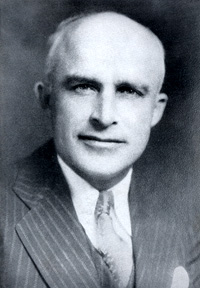
Dr. Ludd Myrl Spivey
1925-1957
Dr. Ludd Myrl Spivey was born in Eclectic, Alabama on December 5, 1886. Soon after, his family moved West, where he attended high school in Oklahoma City. College work was done at Epworth College and Vanderbilt University. In 1912, he was ordained a Methodist minister and married Clara Louise Helmkampf of Jackson, Missouri. By 1920, he had received two degrees from the University of Chicago, where he has also gained a great admiration for the teachings of the American philosopher and educator, John Dewey. He then was appointed to a teaching position and later as Dean at Birmingham-Southern College in Alabama.
Dr. Spivey came to Southern College in Lakeland in 1925. The modern buildings and equipment on the new Lakeland site meant a sizeable indebtedness, and Dr. Spivey's first years coincided with the post-Florida-boom years as well as a nationwide depression. As late as 1933, the trustees voted to close Southern; however, Dr. Spivey took up the task of continuing the College with such engaging enthusiasm and tireless energy that the entire enterprise seemed destined to prosper from that time forward. In 1935, Spivey oversaw the changing of the College's name to Florida Southern College. By 1938, he had successfully persuaded Frank Lloyd Wright, a nationally known architect to build a series of campus structures, while admitting that no money was in hand at the moment. By 1941, Wright had not only completed Annie Pfeiffer Chapel, the first of ten campus structures, but another one was in progress. During his tenure, the campus increased from two buildings to more than forty. The student body increased from less than 300 to over 1400. The operating budget went from approximately $114,000 to over $1 million. Official accreditation came. Graduate and community-oriented programs were added. Intercollegiate sports began. The achievements of past and future graduates were acknowledged and celebrated in the form of the Honor Walk. The Citrus Institute began with the state's first ever Grove Management program. After a remarkable 32-year tenure, Dr. Spivey retired from the College in 1957; he passed away on December 27, 1962 at the age of 76.
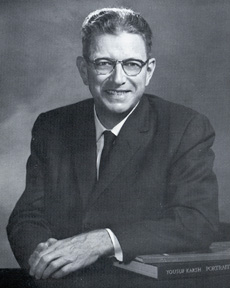
Dr. Charles Tinsley Thrift, Jr.
1957-1976
Dr. Charles Tinsley Thrift, Jr. was born in Kenbridge, Virginia on April 11, 1911 and raised in North Carolina. He received his B.A., M.A. and B.D. Degrees from Duke University, and by age 25, he had completed his PhD at the University of Chicago. He joined the religion faculty at Florida Southern in 1940 and was named vice-president in 1946. At the unexpected announcement of Dr. Spivey's retirement in 1957, Dr. Thrift was named acting President.
When Dr. Thrift was named President on December 16, 1957, he had been with the College for 18 years. During his 19-year presidency, the College received a multi-million-dollar gift in 1966 from the Buckner Estate, the Jenkins Field House was built, the new Roux Library was constructed, and the Ludd M. Spivey Humanities and Fine Arts Center and the Student Union Building were added to the campus. Intercollegiate sports gained national prominence and the international studies program was expanded. The Baseball team won the school's first NCAA Championship in 1971, repeating the win the following year. The Festival of Fine Arts began, and the College celebrated its first ever Homecoming as well as its Diamond Jubilee. It was also during these years that the College was called upon to negotiate the social and spiritual challenges of the campus "protest years," which included redefining "student freedom" and "academic freedom" for the campus family. At the time of Dr. Thrift's retirement on June 1, 1976, he had served the College for 36 years. During his tenure, he also published two books on the history of the College: Through Three Decades (1955) and Of Fact and Fancy at Florida Southern College (1979) in addition to multiple publications on the history of Methodism in Florida. Even after retirement, he continued to serve the school as Chancellor and had his office in The Miami, an old railcar that was brought to the school. Dr. Thrift passed away on May 25, 1984 at the age of 73.
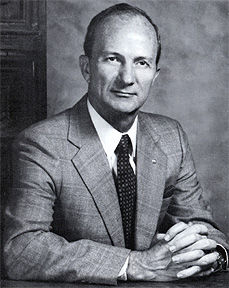
Dr. Robert Aldine Davis
1976-1994
Dr. Robert Aldine Davis was born in Broxton, Georgia on June 15, 1928. He completing his B.B.A with honors at the University of Georgia, his M. Div. Degree at Emory University, and his S.T.M. Degree at Yale University on a Danforth Scholarship. Before coming to Florida Southern, he was the Director of the Wesley Foundation at Virginia Polytechnic Institute and Georgia Institute of Technology, on the executive staff of the Methodist Division of Higher Education in Nashville, and President of Brevard College in Brevard, North Carolina.
Dr. Davis was inaugurated on November 12, 1976. During his presidency, the College endowment made an important advance, including major contributions to new scholarships and the first endowed chairs: the Jessie Ball duPont Chair in the Natural Sciences, the Nelson C. White Chair in the Life Sciences, the John and Ruth Tyndall Chair in Citrus, the William F. Chatlos Professorship of Business Administration and initiation of the Bishop Edward J. Pendergrass Chair in Religion. Multiple structures were added to the campus debt free by the end of construction: the Chatlos Journalism Building, the Charles Jenkins Residence Hall, the J. Carlisle Rogers Building, and the Centennial Tower. In 1981, the men's Basketball, Golf, and Baseball teams won the College's first ever Triple Crown by winning the NCAA Division II National Championships in their respective sports. In 1982, the men's Golf team became the first Florida Southern team to win back-to-back champions two years in a row for the second time. During Davis' tenure, women's sports began to flourish, and in 1993, the women's Softball team won the College's first women's NCAA Division II National Championship. Dr. Davis retired from the College in 1994. He later passed away on October 5, 1997. The Robert A. Davis Performing Arts Center, which opened in 2000, was dedicated in his honor.
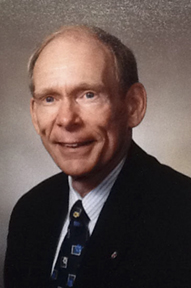
Dr. Thomas L. Reuschling
1994-2004
Dr. Thomas L. Reuschling was born in Ohio in 1942 and graduated in economics from Hiram College. He completed his MBA from Kent State University and his PhD from the University of Colorado. Before coming to Florida Southern, he was president of St. Andrews College in North Carolina.
Dr. Reuschling was inaugurated on December 2, 1994. During his tenure, he made it a priority to interact with students, and created a tradition of walking around the campus. He focused on growing and retaining students as well as building the endowment and increasing diversity across campus. As President, Reuschling continued to expand women's sports and named Lois Webb as the College's first female Athletic Director. Athletics teams, including the new Women's Golf team, continued to prosper, earning a total of 18 NCAA Division II National Championships. Reuschling's successful fundraising efforts led to several building projects, including residence halls and the Hollis Wellness Center, in addition to many building renovations, including the restoration of Frank Lloyd Wright buildings. Dr. Reuschling retired from the College in 2004.
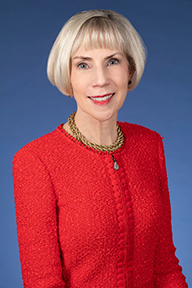
Dr. Anne B. Kerr
2004-2024
Dr. Anne B. Kerr graduated from Mercer University with her bachelor's degree and then received her master's degree and doctorate from Florida State University. Prior to coming to Florida Southern, she was the Vice President for Institutional Advancement at the University of Richmond after previous executive roles as Vice President at Rollins College and Assistant Dean at the University of Central Florida.
Dr. Kerr was named Florida Southern College's President on January 9, 2004 thus becoming the College's first ever female President. During her tenure so far, the College has seen unparalleled growth. The student body has increased to more than 3,200 students total from 2,500 students in 2005. Over 22 buildings and facilities have been added to the campus, including the construction of the Frank Lloyd Wright designed Usonian House. Multiple renovations have also taken place across campus including the restoration of Wright's Waterdome, and gardens have also been renovated and added across the campus. All of these efforts have led Florida Southern to on Princeton Review's "Most Beautiful Campus" list for 11 years in a row. Academic programs have grown with the addition of the Barney Barnett School of Business and Free Enterprise (2011), Ann Blanton Edwards School of Nursing and Health Sciences (2021), School of Physical Therapy (2019); in 2017, Florida Southern also became affiliated with the Polk Museum of Art, which now hosts the College's Art History and Museum Studies program. More than 20 new undergraduate majors have been added as well as new graduate programs in accounting, education, and nursing. The College's first doctoral programs were also added under Dr. Kerr's tenure in education, nursing, and physical. Because of this growth, Florida Southern College consistently ranks high on national lists from across the country in areas such as "Most Innovative," "Best Regional Universities in the South," and "Top Producer of Fulbright Winners." Intervarsity sports have also thrived at the College with teams winning a total of 27 NCAA Division II Championships, including the Women's Lacrosse team winning their first championship in 2016, just 5 years after the program began.
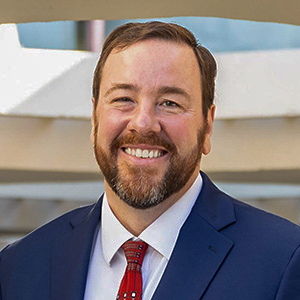
Dr. Jeremy P. Martin
2024-
On August 1, 2024, Dr. Jeremy P. Martin became the 18th president of Florida Southern College. Dr. Martin began his career at William & Mary in 2008, holding key positions, including Assistant to the President and Provost, Associate Provost, and Chief of Staff. Alongside the provost/chief academic officer, Dr. Martin co-chaired the strategic planning process, resulting in the university’s Vision 2026 strategic plan. He also served as Interim Director of Athletics from 2020-2021, providing stability and leading significant initiatives, including the $57.4 million All In fundraising campaign for athletics.
Dr. Martin received his bachelor’s degree from Houghton College and a Master of Science degree from Georgia State University. He also holds a Ph.D. in Educational Policy, Planning, and Leadership and an M.B.A. from William & Mary. He and his wife, Tia, have two children.